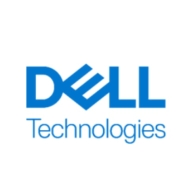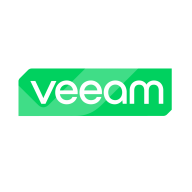

Dell OpenManage Integration for VMware vCenter and Veeam Data Platform compete in IT infrastructure management. Veeam appears to have the upper hand due to its comprehensive backup features, appealing to organizations despite higher pricing.
Features: Dell OpenManage Integration for VMware vCenter is recognized for its seamless integration with VMware environments, extensive automation, and detailed system health reporting. It enhances hardware monitoring and management capabilities efficiently. Veeam Data Platform offers remarkable backup, replication, and disaster recovery functions, delivering complete data protection and emphasizing data security and availability. The main difference is Dell's focus on hardware optimization versus Veeam's emphasis on data security.
Ease of Deployment and Customer Service: Dell OpenManage has a straightforward setup process, especially in VMware environments, and is supported by reliable support services for smooth implementation. Veeam Data Platform, while requiring more extensive planning due to its broad capabilities, benefits from comprehensive customer assistance, guiding users effectively through complex deployments. Dell's strengths are ease and targeted support, while Veeam's strength is adept guidance through complex setups.
Pricing and ROI: Dell OpenManage Integration for VMware vCenter is priced reasonably and is often seen as a cost-effective investment, providing substantial hardware management benefits and operational efficiency. Veeam Data Platform, typically more expensive, offers significant ROI for organizations prioritizing data protection, with its comprehensive backup solutions offering long-term value despite its higher initial expense.
| Product | Market Share (%) |
|---|---|
| Veeam Data Platform | 8.8% |
| Dell OpenManage Integration for VMware vCenter | 2.9% |
| Other | 88.3% |

| Company Size | Count |
|---|---|
| Small Business | 216 |
| Midsize Enterprise | 99 |
| Large Enterprise | 138 |
Veeam Data Platform is designed for modern data management, providing secure backups, intelligent data insights, and resilience. It ensures data is protected, recoverable, and manageable across complex environments, supporting business continuity effectively.
Veeam Data Platform stands out with its robust capabilities in data protection, orchestrated recovery, and efficient management. It offers a simple interface while ensuring data security and availability, which is critical for businesses. The platform's compatibility with virtual machines, databases, and applications across VMware, Hyper-V, and cloud environments makes it a versatile choice for backup and disaster recovery strategies. Users gain confidence from its performance, from secure backups to facilitating effective infrastructure monitoring.
What are the key features of Veeam Data Platform?Veeam Data Platform is widely implemented by industries needing robust disaster recovery plans and data management solutions. It is particularly valuable in environments utilizing hybrid cloud solutions, protecting mission-critical workloads, and ensuring business continuity. Businesses leverage its capabilities to safeguard data integrity and facilitate long-term retention through efficient infrastructure management.
We monitor all Virtualization Management Tools reviews to prevent fraudulent reviews and keep review quality high. We do not post reviews by company employees or direct competitors. We validate each review for authenticity via cross-reference with LinkedIn, and personal follow-up with the reviewer when necessary.